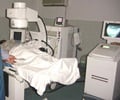Recent research suggests that biomarkers in urine can help identify the early stages of Alzheimer’s disease
- Alzheimer’s disease is the most common type of dementia. It is a progressive disease beginning with mild memory loss and possibly leading to loss of the ability to carry on a conversation and respond to the environment
- Changes in the brain can begin years before the first symptoms appear //
- A recent study revealed the possibility of urinary formic acid as a potential novel biomarker for the early diagnosis of Alzheimer’s Disease
Systematic evaluation of urinary formic acid as a new potential biomarker for Alzheimer’s disease
Go to source). Alzheimer’s disease can remain undetected until it is too late to treat. Large-scale screening programs could help detect early-stage disease, but current diagnostic methods are too difficult and expensive.
According to this research, a simple urine test can reveal if someone has early-stage Alzheimer’s disease, and this can pave the way for large-scale screening programs. The researchers tested a large group of patients with Alzheimer’s disease of different levels of severity and healthy controls with normal cognition to identify differences in urinary biomarkers.
They found that urinary formic acid is a sensitive marker of subjective cognitive decline that may indicate the very early stages of Alzheimer’s disease. Current methods to diagnose Alzheimer’s are expensive, inconvenient, and unsuitable for routine screening. This means that most patients only receive a diagnosis when it is too late for effective treatment. However, a non-invasive, inexpensive, and convenient urine test for formic acid could be just what the doctor ordered for early screening.
Alzheimer’s disease is a continuous and concealed chronic disease, meaning that it can develop and last for many years before obvious cognitive impairment emerges. The cause of Alzheimer’s disease is still unknown for the most part. The early stages of the disease occur before the irreversible dementia stage, and this is the golden window for intervention and treatment. Therefore, large-scale screening for early-stage Alzheimer’s disease is necessary for the elderly.
The issue with the current diagnostic techniques is that they include positron emission tomography brain scans, which are expensive and expose the patient to radiation. There are also biomarker tests that can reveal Alzheimer’s disease, but these require invasive blood draws or a lumbar puncture to obtain cerebrospinal fluid, which can be terrifying for patients.
However, a urine test is non-invasive and convenient and would be well suited for large-scale screening. While researchers have previously identified urinary biomarkers for Alzheimer’s disease, none have been suitable to reveal the early stages of the disease, meaning that the window for early treatment remains elusive.
Formic Acid Could be Key to Early-Stage Diagnosis of Alzheimer’s Disease
The researchers behind this new study have previously investigated an organic compound called formaldehyde as a urinary biomarker for Alzheimer’s disease. However, there was room for improvement in detecting early-stage diseases. In this latest study, they primarily focused on formic acid, a metabolic product of formaldehyde, to see if that performed better as a biomarker.It was found that urinary formic acid levels were significantly increased in all the Alzheimer’s groups compared with the healthy controls, including the early-stage subjective cognitive decline group, and correlated with cognitive decline. This suggests that formic acid could act as a sensitive biomarker for early-stage Alzheimer’s disease.
Researchers conclude that urinary formic acid showed excellent sensitivity for early Alzheimer’s disease screening. The detection of urine biomarkers of Alzheimer’s disease is convenient and cost-effective, and it should be performed during routine physical examinations of the elderly.
Reference:
- Systematic evaluation of urinary formic acid as a new potential biomarker for Alzheimer’s disease - (https://www.frontiersin.org/articles/10.3389/fnagi.2022.1046066/full)
Source-Medindia















